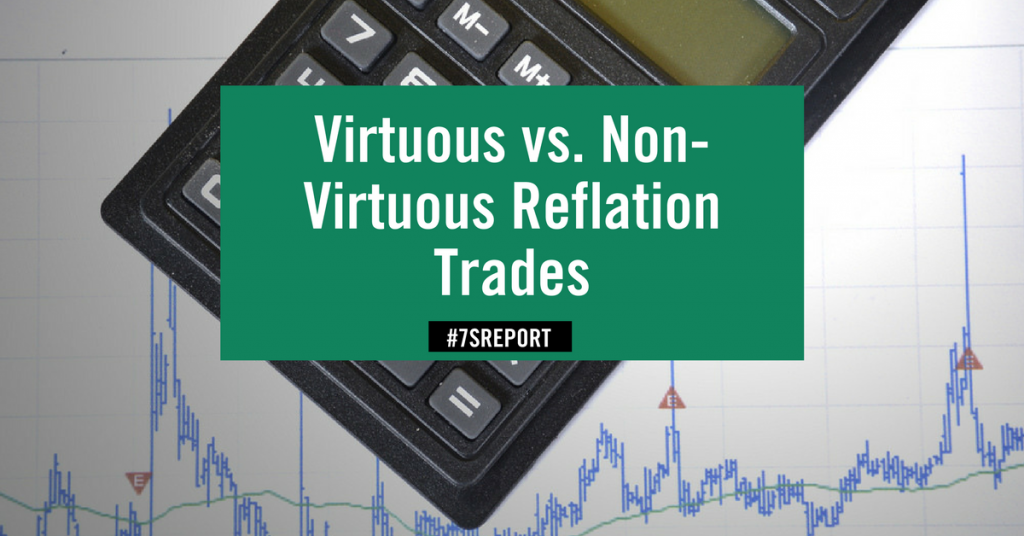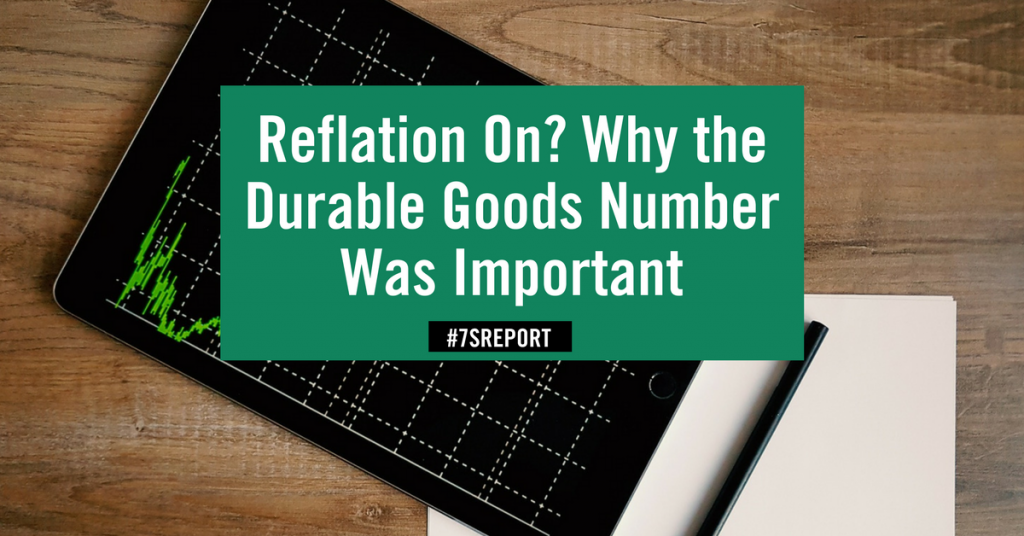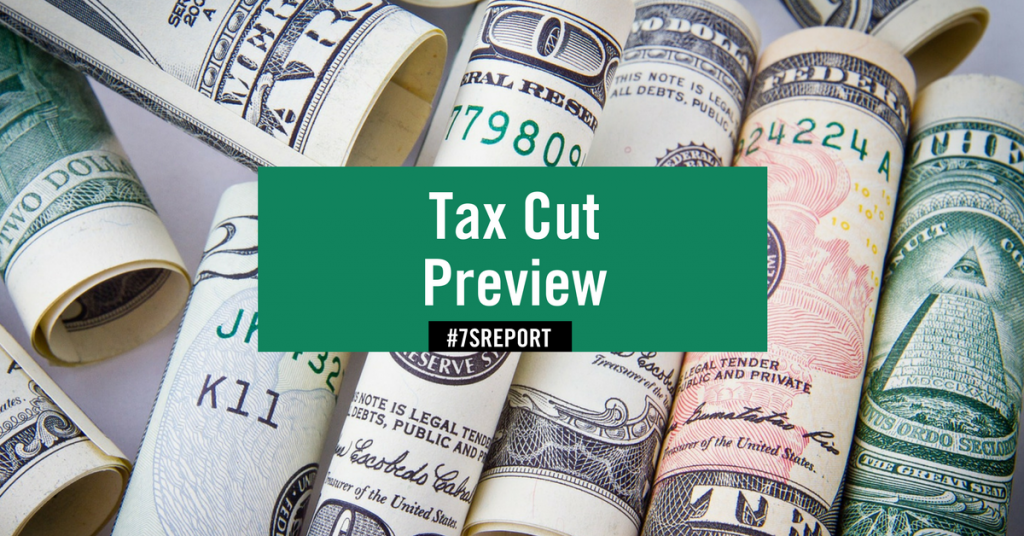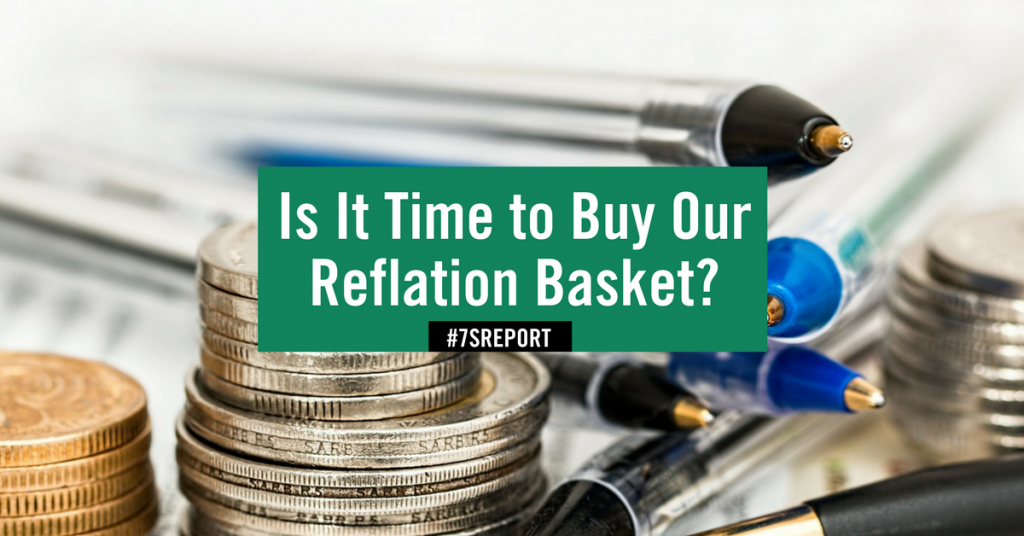The Sevens Report is the daily market cheat sheet our subscribers use to keep up on markets, leading indicators, seize opportunities, avoid risks and get more assets. Get a free two-week trial with no obligation, just tell us where to send it.
Can the economic data support a continued bullish “reflation” trade in the markets? So far, the events of this week (strong Durable Goods, “progress” on pro-growth tax reform) have supported that idea, and that’s why the S&P 500 is sitting at fresh all-time highs.
But, the next seven days will present both risks and opportunities for the reflation trade to accelerate, or falter.
In yesterday’s issue, I referenced a “virtuous” reflation trade—one that is positive for the broad stock market and especially positive for our reflation basket.
In this scenario, 1) Inflation firms and gradually accelerates, 2) Growth accelerates modestly, 3) Central banks gradually raise rates but not at a pace that unnerves the stock market or sends yields too high, to quickly.
That’s what we’ve seen from the data starting almost three weeks ago with the Chinese inflation numbers
(followed by firm British CPI and US CPI). That’s why stocks have rallied, and it’s why our reflation basket has outperformed.
Conversely, there is a “non-virtuous” reflation we need to be aware of. In this scenario, growth and inflation accelerate too quickly, and markets begin to price in a more hawkish Fed, ECB and BOE.
In this scenario, while banks and other ETFs listed in our reflation basket would either outperform on an
absolute basis and/or on a relative basis, the rest of the market might not fare as well (particularly tech).
This is what we saw in June, where the declines in tech weighed so much on the market that it began to “suck in” other, more cyclical sectors. This is the negative side of reflation we need to watch for in the weeks ahead.
Bottom line, the market now again nearing a tipping point, and the data today and next week will go a long way to telling us 1) Whether we’re seeing a legitimate reflation, and 2) Whether it’s virtuous (bullish).
Cut through the noise and understand what’s truly driving markets, as this new political and economic reality evolves. The Sevens Report is the daily market cheat sheet our subscribers use to keep up on markets, seize opportunities, avoid risks and get more assets. Sign up for your free two-week trial today and see the difference 7 minutes can make.
The post Virtuous vs. Non-Virtuous Reflation Trades appeared first on Sevens Report.
source https://sevensreport.com/virtuous-vs-non-virtuous-reflation-trades/




